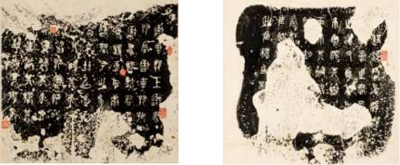| Yanan Wang | 1 Article |

Ancient stone inscriptions composed in ancient script ÕÅżµ¢ćÕŁŚ, known as epigraphic rubbings of ancient texts ÕÅżµ¢ćńóæÕĖ¢, are confirmed to have been introduced into Chos┼Ån in large numbers beginning in the late sixteenth century. The interest in epigraphic rubbings of ancient texts ÕÅżµ¢ćńóæÕĖ¢ during the late Chos┼Ån period stemmed from the fervent enthusiasm for epigraphy ķćæń¤│ and epigraphic compilations ķćæń¤│ÕĖ¢. Starting with the 17th-century envoy mission to Beijing ńćĢĶĪī led by Rangs┼ÅnŌĆÖgun Yi U µ£ŚÕ¢äÕÉø µØÄõ┐ü, Chos┼Ån envoys who admired epigraphy and calligraphy acquired Shiguwen ń¤│ķ╝ōµ¢ć, Shenyubei ńź×ń”╣ńóæ, and Yishanbei ÕȦÕ▒▒ńóæ, thus giving rise to the epigraphy fever ķćæń¤│ńå▒ beginning in the 17th century, which extended to the domain of epigraphic rubbings of ancient texts ÕÅżµ¢ćńóæÕĖ¢. What is especially noteworthy is that in the late Chos┼Ån period, epigraphic rubbings of ancient texts ÕÅżµ¢ćńóæÕĖ¢ were not merely briefly described, but rather were subjected to in-depth analysis and decipherment of characters and texts from a philological standpoint.
Shiguwen ń¤│ķ╝ōµ¢ć, the first stone-carved poetic inscription in China, is confirmed to have been introduced already in the 15th century and was brought in repeatedly through 17th to 19th-century envoy missions to Beijing ńćĢĶĪī. Accordingly, Chos┼Ån literati revealed a general philological consciousness by citing works such as Rixia jiuwen kao µŚźõĖŗĶłŖĶü×ĶĆā, Daxing xianzhi Õż¦ Ķłł ńĖŻ Õ┐Ś , and Dijing jingwu l├╝e ÕĖØ õ║¼ µÖ» ńē® ńĢź to investigate the textual transmission of the Stone Drums ń¤│ķ╝ō. Shenyubei ńź×ń”╣ńóæ is presumed to have been introduced during the 16th to 17th centuries, and it is confirmed that a rubbing µŗōµ£¼ of Shenyubei had already been brought into Chos┼Ån by 1659, as evidenced through a classical Chinese poem by Yun H┼Łk Õ░╣ķæ┤. H┼Å Mok Ķ©▒ń®å (1595ŌĆō1682) identified the edition of Shenyubei purchased by Yi U, Nam K┼ŁkŌĆÖgwan ÕŹŚÕģŗÕ»¼ criticized the cultural value of Shenyubei with striking acuity, and S┼Ång Hae┼Łng µłÉµĄĘµćē synthesized and organized the theories concerning the transmission and excavation of Shenyubei. Moreover, Chos┼Ån literati appreciated the aesthetic quality of the calligraphy in the inscription of Yishanbei ÕȦÕ▒▒ńóæ from the early stage of its introduction and actively embraced its calligraphic style µøĖµ│Ģ, exhibiting a philological attitude regarding issues such as the authenticity and authorship of the stele.
|
|

